The Pho CookbookEASY TO ADVENTUROUS RECIPES FOR VIETNAM’S FAVORITE SOUP AND NOODLES
With this comprehensive cookbook, Vietnam’s most beloved, aromatic comfort food–the broth and noodle soup known as pho–is now within your reach.
Author Andrea Nguyen first tasted pho in Vietnam as a child, sitting at a Saigon street stall with her parents. That experience sparked a lifelong love of the iconic noodle soup, long before it became a cult food item in the United States.
Here Andrea dives deep into pho’s lively past, visiting its birthplace and then teaching you how to successfully make it at home. Options range from quick weeknight cheats to impressive weekend feasts with broth and condiments from scratch, as well as other pho rice noodle favorites. Over fifty versatile recipes, including snacks, salads, companion dishes, and vegetarian and gluten-free options, welcome everyone to the pho table.
With a thoughtful guide on ingredients and techniques, plus evocative location photography and deep historical knowledge, The Pho Cookbookenables you to make this comforting classic your own.
Andrea Nguyen is one of the country’s leading voices on Asian cuisine and the author of the acclaimed Asian Dumplings, Asian Tofu, The Banh Mi Handbook, and the James Beard– and IACP-nominated Into the Vietnamese Kitchen. She has written for Saveur magazine, where she is also a contributing editor, the Los Angeles Times, and many more publications. She is also the creator of the Asian Market Shopper app. Her engaging and knowledgeable writing on cuisine and culture has attracted a loyal and well-deserved readership that actively follows her blog, www.vietworldkitchen.com. Andrea lives in Santa Cruz, California.
You seen these places popping up more and more. Places selling Pho. Most of us might have a general idea of what it is. Andrea Nguyen Recently talked to us about all things Pho.
Books About Food (BAF): My first question really has to be is what is Pho?
Andrea Nguyen:Pho is the default national dish of Vietnam, and it’s also not just a noodle soup, as a lot of people think of it, but it’s also about the noodle itself. The flat rice noodle, which comes in a different widths. I describe it as linguine, fettuccine and pappardelle, and you can use the linguine and fettuccine for Pho noodle soup, or you can use fettuccine for a little stir fry if you want to, but the pappardelle, the really wide ones are typically pan fried or stir fried, or deep fried like Chinese Chow Fun. The noodles themselves are rice, they’re traditionally made just with rice only. But now sometimes there’s a little starch in there like maybe tapioca starch or this stuff called wheaten starch.
But for like most American cooks they’re going to buy them dry, and when you buy them dry they’re actually all rice, most of the time … and I think that dry noodles are nearly as good as fresh ones, if you treat them right.
You look at the bowl and you’re like oh my god, it’s like old, ancient food, but it’s not. (laughs) It’s relatively new, maybe like a hundred, maybe a hundred and twenty years old. It’s a result of cultures rubbing shoulders and colliding in Vietnam. Especially in the northern part.
BAF:What is its place in Vietnamese culture today?
Andrea Nguyen:Well, Today it’s still much appreciated. It tends to be an urban food in Hanoi and Saigon. It’s the only Vietnamese dish I know of, that embodies modern Vietnamese history in the 20th and 21st century. Before I wrote the book I didn’t realize how big of a role it played in Vietnamese culture in terms of poetry and art, and protest and espionage during the war. From my own family’s experience, the whole thing of the diaspora of bringing memories of Pho and recreating those flavors in their new homeland, in their new countries, wherever they settle. I was aware of that, but when I dug really deep to figure out what does Pho mean to Vietnamese culture, I was really blown away at the kind of, the people were writing poetry and protest essays, to talk about colonialism and to talk about classes, because Pho is very democratic and Pho is wholly Vietnamese, so it was used to build a lot of nationalism in Vietnam. Who would have thought? A little bowl of noodle soup, right?
BAF:You mentioned it’s big in the urban centers, is there a regionality to it?
Andrea Nguyen:It’s typically a north versus south thing in terms of the Pho fight. (laughing) Northerners lay claim to pho, because pho is where, was birthed in and around Hanoi. The pho there is very pure and delicate. It tends to be more savory than sweet, so saltier than sweet. You get very few herbs. You don’t get that entire plate of stuff. The Thai basil and the bean sprouts with it, and definitely there’s no hoisin sauce or Sriracha. The northerners believe if your gonna eat pho, you eat it with mint, and mint, surprisingly to a lot of people who are not familiar with mint and pho, is a wonderful, bright note and refreshing note. It pairs well with any kind of pho, beef or chicken, and your seafood, whatever. So, you don’t have to have Thai basil all the time, ’cause Thai basil is more of a preference for southern Vietnamese pho.
Southern Vietnamese pho tends to be a little bit sweeter than salty. The portions are bigger and you get the heaping plate of produce, and you get the hoisin sauce and the chili sauce. The range of herbs that you get can be surprisingly large, like maybe three or four different kinds.
Southerners in Vietnam, like in other parts of the world, love to live large. To really dress things up with lots of fanciful jewelry kind of thing, and so their pho reflects that, and they would call themselves more progressive,. They would say that the northern pho is conservative and not generous, because the portions are so small, and they’ll go oh ‘the the Hanoi pho is so bland’, and the northerners will say oh my gosh, ‘they make everything so sweet in the south. Look at those large bowls, it’s so crude and they swirl that sauce into their bowls’. It goes back and forth, but those are for diehards. Hardcore pho eaters. My thought is you just need to start making it yourself and then you can appreciate what pho is and what it can be, and then it’s ultimately the ‘have it your way’ food, and I think one of the reasons why it’s so appealing to people.
BAF:Is Pho something that you go out to eat, or is it more of a family thing?
Andrea Nguyen:Its one of the things in Vietnam is that it is a street food, because people don’t have big stoves in their homes and so, they don’t have the luxury of what we would consider to be a small kitchen space in America. In Vietnam that would be a luxury. A lot of people don’t have ovens. In recent years most homes have refrigerators. They’re not going to necessarily be cooking’ up pho every weekend, because ike with beef bones, they’re hard to find. But people know how to, they understand how to make it and what goes into it, and some people do make it, like my cousin who lives in Hanoi, she makes pho. I’ve talked to professional cooks who have delved into it, even though they don’t make pho on a regular basis, they’re not like pho vendors.
People eat it out more often, because again, it requires a lot of time and space and ingredients to make. When they eat it out a lot times they’ll have it in the morning, but you can also have pho sometimes in the midday, if you’re in an urban area like Saigon, and then some pho shops close down after they run out in the morning and then they’ll reopen at night for people who want pho for dinner, or like a late night snack.
I went to the birthplace of pho, this city outside of Hanoi, about 90 kilometers outside of Hanoi, and there are a lot of people eating pho there, but when I went to Da Nang, which is a pretty big city in the southern region, I asked this cab driver, Do you eat pho a lot? and he said, “Sister, pho is expensive for us. We have other noodle soups that are just as good”, but what I sort of interpreted that it costs less, he said. That was a surprise point. The other thing he was also saying is, here in Da nang we’ve got some other dishes that are just as good as pho. (laughs) So, there’s like this certain pride thing.
BAF:Hometown pride…
Andrea Nguyen:Yeah. They recognize the importance of pho but they’re also like, ‘hey our food, our local specialties are awesome, too’. Then there are recipes for home cooks and Vietnamese recipe books, cook books on how to make pho. I think that over time people, as the economy improves there, you’ll probably get more people making these dishes at home, because there’s also health factors. I go eat out, number one it can be costly, and number two there can be like strange stuff and some people are sensitive to MSG – yes, even in Vietnam. You want to like, control it or something. There’s a lot of change going on in Vietnam.
When my mom came here in 1975, she had made pho in Vietnam, but recreating those flavors required that she ask a lot of other people, other Vietnamese expats for tips and tricks, and together collaboratively they would, they came up with, I think with sort of like this Vietnamese-American interpretation of pho, which is using the large yellow onions, like in Vietnam they have these shallots that are the size of boiling onions. Every time I see them when I go to Vietnam, I was like oh my god what a pain in the butt. (laughs) Char them, and then have to peel them for a pot of pho.
BAF:You grew up with this. Immersed yourself in it. Was there anything that really surprised you, or any interesting discoveries in your quest to do the book?
Andrea Nguyen:There’s pho stuff going on in the states. Someone had tweeted to me that they were making pho soup dumplings in Brooklyn, for example. Which I thought was very cute and then when I was working on a banh mi book I learned that someone was making a beef pho dip here in California, so I thought well, that’s interesting. Then what I did not expect was going to Vietnam and experiencing that same level, if not higher level of pho innovation.
What I’m talking about are things like deep fried pho, so there’s a recipe in the book and it was because we went to go looking for the pho rice noodles, sheets that were, are like little hand rolls, so you take a fresh steamed rice noodle sheet, and then you roll some stir fried beef and lettuce and herbs in there, and then you eat it like a little hand roll. I’d heard about those, and they’d been around for a number of years, but when we went to go eat them, on the menu there was deep fried pho and I was like what is this? Turns out they were like batter coated wide pho noodles that were deep fried and then a stir fry was plopped on top. I was like holy mackerel. It was like if you had pho at an American state fair (laughs) ’cause I was like holy moly and they said in the little Vietnamese translation was deep fried pho.
The other thing that I thought was interesting, too and I was incredulous about was the idea of a pho cocktail.
BAF:Okay. Nowhere to go with that one.
Andrea Nguyen:Me neither. ’cause I go to Hanoi. Hanoi’s very conservative and very traditional, and conventional and my friends there said you’ve got to go try the pho cocktail. I said like what? And they said you have got to go try it. My travel buddy Karen Shinto and I went to The Metropole Hotel in Hanoi, which is this storied French colonial hotel. There was a cocktail there called the Joan Baez, and this very creative young bartender had created it from the idea that during the Vietnam war there was Joan Baez in the basement of The Metropole Hotel singing folks songs while bombs are being dropped on the city.
What he did was, he created this three tiered contraption that he put the various pho aromatics in there, the spices and ginger and then he poured through these three sets of little metal cups and there was a hole in the bottom of each one of those metal cups, and then they poured gin through it, but the gin was on fire, and they did that three times so that the gin would pick up the flavors of the aromatics, and then they mixed, I think some quantro in there or something like that and then served it up on the rocks with cilantro and chili, and it was really good.
BAF:That’s quite a drink.
Andrea Nguyen:It was quite a drink and that’s why, in the book I have pho cocktails, Because I thought you know what? If people are inspired by this, by the noodle soup to create a cocktail, that is pretty awesome.
BAF:Anything you are currently working on?
Andrea Nguyen:Well, that’s what my mother says she goes aren’t you done? (laughs) and so I’m working on a new project to take a look at how to get Americans to make Vietnamese food as part of their regular rotation.
And another project that I have going on this year that isn’t related Vietnamese cooking at all is that I am, I edited a biography cookbook Paula Wolfert.
And it was Kickstartered about a year and a half ago with nearly a hundred thousand dollars, and the book is releasing on the 4th of April.
It’s called “Unforgettable” it’s a really heartfelt project and we just decided that we have to do this on our own, because publishing houses were saying to Emily, the author, that Paula’s time had passed, that people weren’t interested. You know I thought to myself, if anybody ever says that about about me I’m gonna have to clobber them. (laughs) We did this on our own. It has been challenging, but it’s a really solid book and Paula’s life cannot be replicated in any way, because of who she is and the times in which she lived. It quite, I’m very proud of both pho and “Unforgettable”.
Copyright Booksaboutfood.com 2017
“Andrea Nguyen has done the English-speaking world a tremendous favor with this book, the most authoritative guide to pho I’ve ever seen. It dispels rumors, tells truths, and thoughtfully chronicles Vietnam’s rich but underexplored soup culture. Andrea lays out the facts about pho in a way that makes you slurp them down, and then chases the lessons with a stack of recipes that will send you directly to the kitchen. The marriage of purpose and passion that she’s brought to this book is a rare thing.”
– DAVID CHANG, coauthor of Momofuku and cofounder of Lucky Peach
“Andrea Nguyen is the world’s greatest expert in Vietnamese cooking. Her latest book is a stunning and comprehensive guide to pho, that country’s most delicious food. Everything you ever wanted to know about pho is here: how to make it, how to eat it, its history, its regional variations—and so much more. All lovers of Asian food need to own this most extraordinary book.”
– JAMES OSELAND, author Cradle of Flavor: Home Cooking from the Spice Islands of Indonesia, Malaysia, and Singapore
“Andrea Nguyen is the kind of writer who doesn’t just show you how to follow her recipes, she also teaches you how to be a better cook. This book is a fantastic example. You’ll learn how to make delicious pho while also gaining a whole new sensibility around an unfamiliar pantry. Buy this book. Cook from it. You’ll end up a far better cook than you were before.”
– PIM TECHAMUANVIVIT, proprietress of Kin Khao
What is Pho? 1
1 PHO MANUAL 17
2 MASTER PHO 39
3 ADVENTUROUS PHO 69
4 PHO ADD-ONS 93
5 STIR-FRIED, PANFRIED, AND DEEP-FRIED PHO 113
6 PHO SiDEKICKS 127


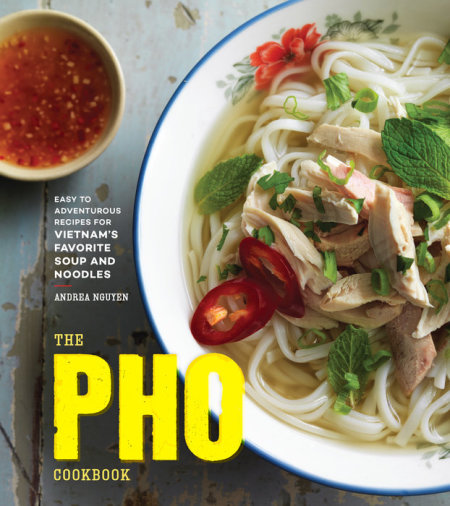


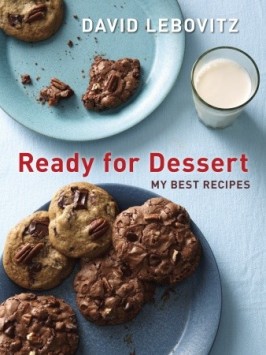
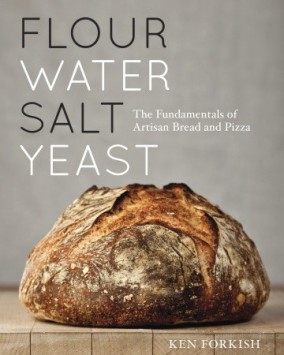
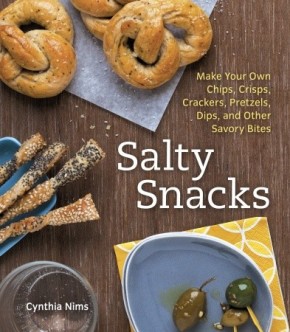
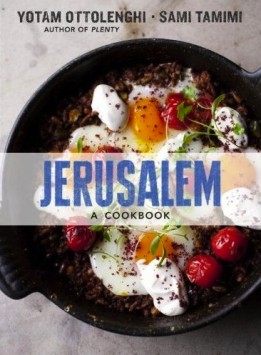
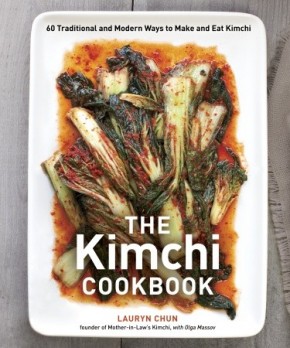
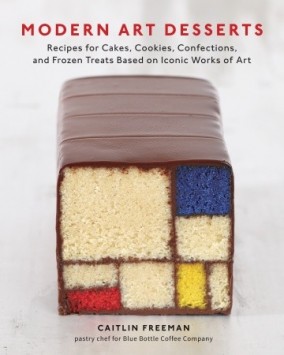
Leave a Reply